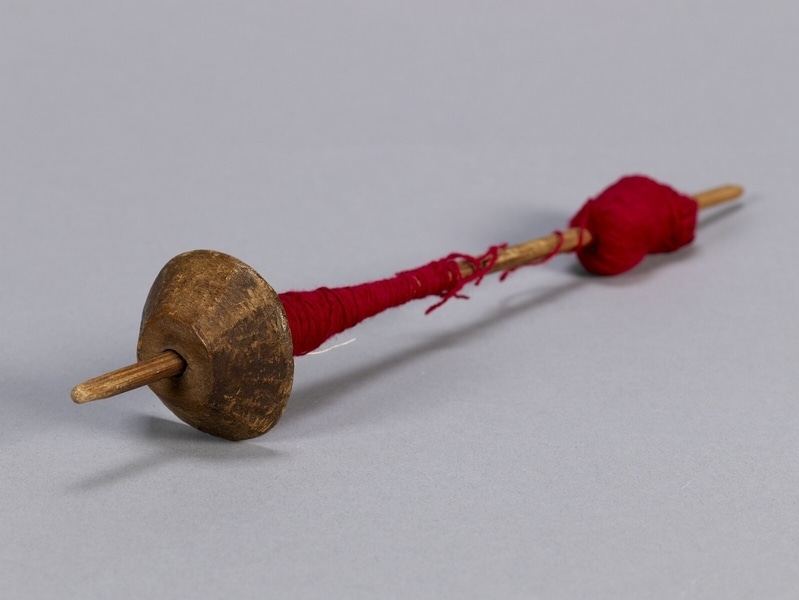Spindle Item Number: Sf975 from the MOA: University of British Columbia


Description
Spindle consisting of a wooden shaft with a cone shaped whorl positioned near one end. A small section of red, two ply s twist yarn is wound on the shaft above the whorl and a ball of yarn with less plying twist is attached to the spindle.
History Of Use
Men, women and children spin yarn whenever their hands are not otherwise occupied; while walking, herding or visiting. Children learn to spin between 3 and 5 years of age. The majority of yarns are spun from a families own sheep's wool. Alpaca fibre is traded. Commercial yarns are purchased in Puno and re-twisted to make them suitably durable for warp-faced textiles. Commercial yarn is being prepared for weaving a warp-faced fabric.
Specific Techniques
Drop spindle; adding s twist to a commercial s ply yarn.
Iconographic Meaning
The direction of yarn twist for ordinary use ply. Yarns spun in the opposite direction to this are made for ritual and magical purposes and are called lloq'e or 'left' spinning.
Cultural Context
textile production
Narrative
Bought from Gonzalo Yucra Huatta who made the sample for the Museum on a spindle previously used by his family.
Item History
- Made by Gonzalo Yucra Huatta (Maker) in Taquile, Puno, Peru on May 16, 1982
- Collected by Mary Frame during 1982
- Owned by Mary Frame before February 10, 1983
- Received from Mary Frame (Seller) and Museum of Anthropology Shop Volunteers (Funding source) on February 10, 1983
What
Who
- Culture
- Quechua
- Creator
- Gonzalo Yucra Huatta (Maker)
- Field Collector
- Mary Frame
- Previous Owner
- Mary Frame
- Received from
- Mary Frame (Seller) and Museum of Anthropology Shop Volunteers (Funding source)
Where
- Holding Institution
- MOA: University of British Columbia
- Made in
- Taquile, Puno, Peru
When
- Creation Date
- on May 16, 1982
- Collection Date
- during 1982
- Ownership Date
- before February 10, 1983
- Acquisition Date
- on February 10, 1983
Other
- Item Classes
- textiles
- Condition
- good
- Accession Number
- 0861/0035